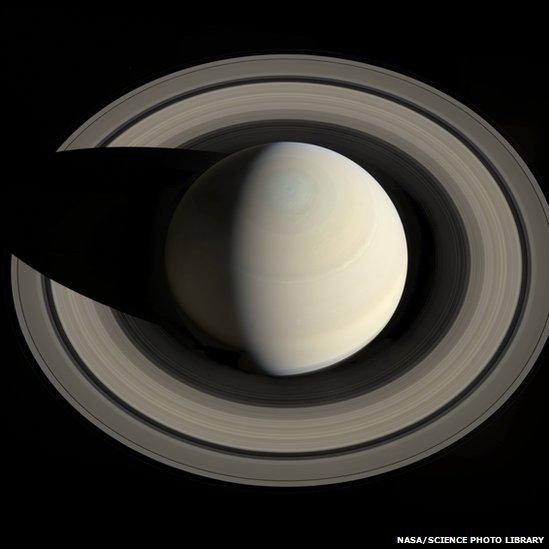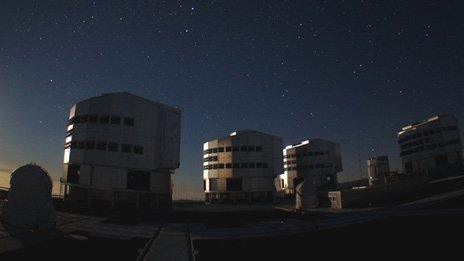Saturn pinpointed to within one mile by giant telescope
- Published

The Cassini probe set off in 1997 and arrived at Saturn seven years later
Thanks to a continent-wide radio telescope, astronomers say they know where Saturn is - to within one mile.
The calculation is many times more accurate than previous estimations and will be useful for the future study of our solar system and beyond.
It used signals sent by the spacecraft Cassini, orbiting Saturn since 2004.
Ten antennae scattered from Hawaii to the Virgin Islands performed the precise measurement, despite Saturn being nearly a billion miles away.
This powerful assembly is known as the Very Long Baseline Array (VLBA), a giant telescope in ten parts.
The findings were reported at a meeting of the American Astronomical Society, external in Seattle.
"Because of [the VLBA's] large geographic extent, it has the ability to make very high resolution images - but for this study, the critical thing it can do is measure very precise angles," explained Dr Dayton Jones of Nasa's Jet Propulsion Laboratory.
Dr Jones and his colleagues tracked Cassini's position relative to a reference grid of quasars - bright, ancient radio wave sources well beyond our galaxy.

Saturn, pictured by Cassini and now pinpointed in space thanks to the craft’s transmissions
Without using this type of radio astronomy, where the antennae compare notes in a technique known as "interferometry", Dr Jones said the best estimates of Saturn's location were about 20 times less precise.
From our distant vantage point, predicting Saturn's trajectory to within about one mile is the equivalent of "the width of a dime at 2,000 miles", Dr Jones said.
"This is very good, and far better than previous techniques have been able to provide," he added, commending the "extraordinary precision" of the VLBA.
And that precision is especially important when it concerns a giant planet like Saturn.
"Getting better orbits... particularly for the two planets that dominate the dynamics of our solar system, Jupiter and Saturn, improves the basis of the entire ephemeris," Dr Jones said.
Exact model
An ephemeris is a table of predicted locations in space.
It has widespread uses in astronomy. Scientists who study the blinking light of pulsars have to be sure of their timing, and require an incredibly exact model of Earth's own orbit.
"And all the other bodies in the solar system affect the Earth's orbit, so you really want to have that all put together in a nice consistent system," Dr Jones told the BBC.
Furthermore, when it comes to planning an actual mission there is little room for error.
"If you want to send a spacecraft to orbit one of the moons of Saturn or Jupiter, you really do want to know what that trajectory has to be, to get there at the same time as the planets do!"
Follow Jonathan on Twitter, external.
- Published16 April 2014
- Published3 February 2012
